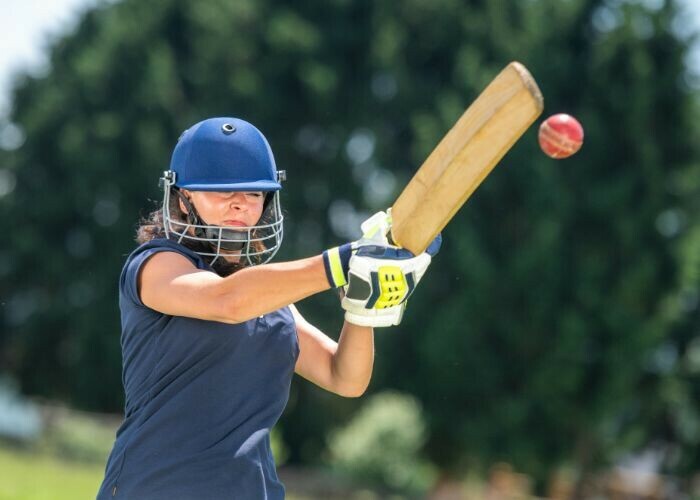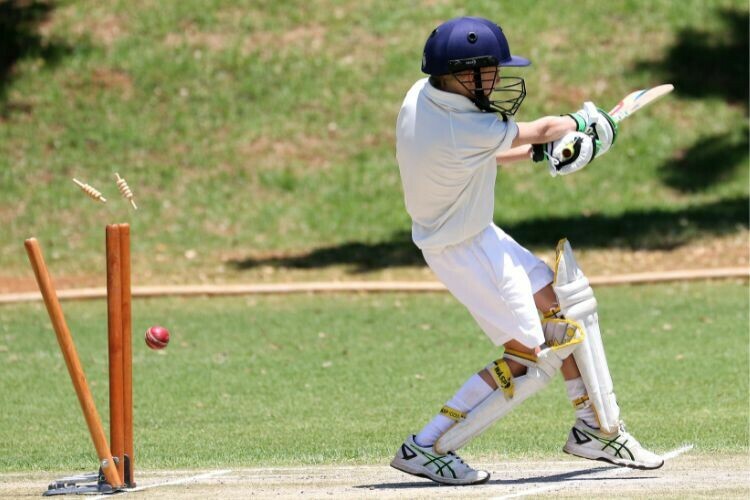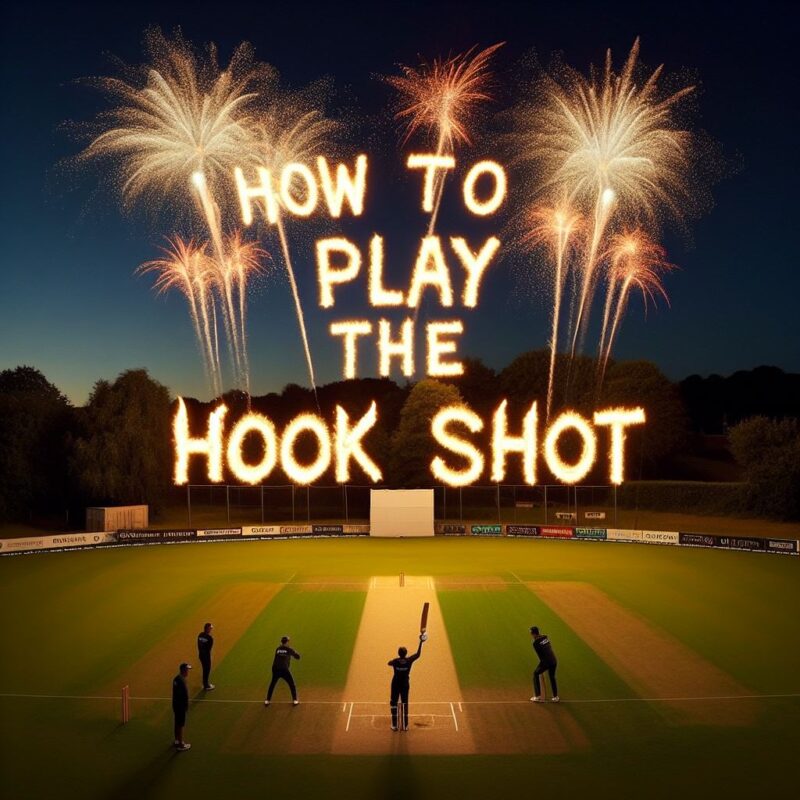The hook shot is one of the most thrilling and aggressive strokes in the repertoire of any cricketer. It is a daring stroke played against short-pitched deliveries that are typically aimed at the body above chest height.
At its most basic, the hook shot involves the batter swivelling on the back foot and striking the ball from a high position down to the leg side, ideally rolling their wrists to get the ball to ground as quickly as possibly. It is a difficult shot, and can often go wrong, but when executed properly, it can demoralize fast bowlers with its audacity and flair.
Some of the best batters in the world have become synonymous with the hook shot. Viv Richards used the hook shot to dominate some of the fiercest fast bowlers of his era, and Ricky Ponting’s proficiency with the hook shot allowed him to control and dispatch short deliveries with remarkable consistency and power. They not only mastered the shot, they made it a part of what made them so intimidating to any bowlers bowling to them.
There’s a visceral thrill watching a batter take on a fast bowler with a perfectly timed hook shot, particularly if they send the ball soaring into the stands. The risks associated with shot, and there are many, add a layer of drama and suspense to the whole batter/bowler conflict.
Decoding the Dynamics of the Hook Shot
There are similarities between the hook shot and the pull shot, and they can often be confused. But there are some distinct differences in both how the shot is executed and the purpose of the shot.
Like the pull shot, the hook shot is played against balls that are short pitched, but where the pull shot is better suited for ball’s rising from waist to chest level, the hook shot is suited to balls from chest to head height.
Both shots are aggressive, but the hook shot’s requirement for precise timing and bold execution sets it apart as a particularly challenging and effective stroke for you, as the batter, to master.
Strategically, the hook shot is most advantageous in situations where fast bowlers attempt to intimidate batters with short deliveries aimed for the chest or head. Many batters will duck these types of balls, or try to defend them, but the batter who can hook without risk turns the intimidation around.
These are the type of batters who want to assert their dominance over the bowling attack. Instead of being intimidated, they become the intimidator.
Timing is crucial. A fraction of a second’s delay can lead to a top edge or a miss, which might result in getting caught behind or even hit in the head.
You, as the batter, must decide quickly whether to commit to the shot or opt for a defensive tactics. Risk management is key; take into consideration the pace and bounce of the pitch and the current match situation. Often, caution is the best option, but there are times when aggression is required.
Mastering the Mechanics: Stance to Follow-Through
The hook shot, while a display of aggression and reflex, demands meticulous preparation starting from the stance and grip, moving through the swing, and culminating in the follow through.
Stance and grip: The foundation of a good hook shot begins with a stable and balanced stance. You should maintain a slightly crouched position with feet shoulder-width apart, knees slightly bent, and weight evenly distributed. This lowers the centre of gravity and enhances stability and mobility, crucial for reacting to fast, short-pitched deliveries. Your grip should be firm yet relaxed, allowing your wrists to rotate freely.
Initial Movements: Timing and positioning are critical when facing quick bouncers. You must watch the ball closely from the bowler’s hand and make a split-second decision to play the hook. Your back foot should move backwards and to the offside. You then begin to pivot on that back foot, bringing your front foot backwards and to the onside, so that you become chest-on to the bowler.
You are wanting to get in a position where the ball will be slightly on your leg side, so that if you miss it, the ball won’t hit you. At all times, keep your eye on the ball and keep your balance also.
Swing: While your body gets into position, your bat should also be getting into position. You don’t need a big backlift. Keep your eye on the ball. There is still time to not to play the shot and duck or sway out of the way instead.
If you decide to play the shot, fully commit to it. When performing the hoot shot, your arms should be at full extension to get the most power and control over the shot. Swing through and aim to hit the ball in front of your eyes.
Follow-through: The momentum of the shot will cause you to continue to pivot so that both of your feet are pointing towards where the ball is hit. Sometimes, your front foot may actually be raised, and your body weight is centred on your back foot. This is ok, too, as long as you remain balanced.
When to Hook for the Fences

The hook shot is not just a technical skill; it is the epitome of risk management in batting. It combines audacity with acute judgement to ensure that you lessen the risk as much as possible. Being able to use the shot can eliminate one of the bowler’s best intimidatory tactics, but not every short ball should be swung for the fences.
Analyzing Game Scenarios: In any type of risk reward scenario, the risk must be outweighed by the reward. During aggressive bowling spells where fast bowlers employ short-pitched tactics to intimidate, an adeptly played hook shot can shift momentum back to the batting side.
In longer forms of the game, it can be particularly effective where changing the pace of the game can affect the bowler’s rhythm and confidence. In the shorter forms of the game, using the hook shot can exploit fielding restrictions and allow you to score quickly.
Weighing Risks vs Potential Runs: The decision to play a hook shot involves a calculated risk. The possibility of top-edging to a fielder or misjudging the bounce makes it a risky choice. Make sure you know where the fielders are; if there are fielders back for the hook shot, then perhaps, it’s not the best time to be playing a hook shot.
Ultimately, mastering when to play the hook shot involves a deep understanding of the game’s dynamics, your own personal skill level and the current match situation. By taking these things into consideration, you can add a powerful tool to your arsenal that not only scores runs, but also intimidates bowlers and shifts the dynamics of the innings in your favour.
Practice Drills
To master the hook shot, you need a blend of regular practice in the nets, drills that target the hook shot, and learning from the pros.
Hook Shot Drills
Practicing the hook shot begins with targeted drills that simulate the match conditions under which this shot is most effective. A useful drill sees the coach or another player throw short-pitched deliveries at various speeds and directions. This allows you to practice your timing and placement repeatedly.
Another effective drill involves using a bowling machine set to deliver balls at chest or head height. This enables you to adjust and react quickly to the delivery, which is a must-have for mastering the hook shot.
And finally, spend some time in the nets with bowlers who are bowling a variety of delivery types. Playing the hook shot when you know that the ball will be short and bouncing above chest height is far easier than picking out the bouncer in amongst other bowling of variable lengths. In a real game, the bouncer is usually used sparingly, as a shock weapon, and your reaction to that delivery will determine how well you play it.
Learning from the best
Watching and analysing professional players who excel at the hook shot can provide valuable insights. Studying footage of cricketers like Viv Richards, Ricky Ponting on modern masters like Virat Kohli will help you with crafting your own way of playing the hook shot.
Observe their stance, their feet movements, the way the swing their bat, the way the position their bodies in preparation for the shot, how they pivot their feet to get into correct position … all of these things can offer you practical insights that you can incorporate into your practice sessions.
Common Mistakes and Corrections

The hook shot, while dynamic and potential game-changing, comes with its own set of challenges and common mistakes.
One of the most frequent mistakes is misjudging the length of the ball, leading to missing the ball entirely or getting a top edge. Another common error is improper footwork; if you fail to pivot your back foot correctly you can restrict your body from rotating properly. This lessens your control of the shot and the power you are able to bring to it. Additionally, players often fail to roll their wrists upon impact, resulting in the ball going high in the air and being caught in the deep.
Constructive Tips for Remedying Hook Shot Slips Ups
To correct these errors, you need to focus on several key adjustments:
Judgement of length: practice with a coach or a bowling machine to better judge the length and speed of short deliveries. In time, with a lot of deliveries lodged in your mental database, your reaction will become more instinctual and you will be able to judge the length better.
Footwork and Body Rotation: Work on the pivot of your back foot, imagining the ball coming towards you. Work on this until it becomes muscle memory and second nature.
Wrist Work: Work on your wrist rotation during the point of contact. Have someone bowling short to you and practice rolling your wrist, keeping the ball down as much as possible.
Last Word on the Hook Shot
While consistent practice is crucial for mastering any cricket shot, don’t aim for execution perfection. This can lead to frustration and placing yourself under undue pressure. Instead, focus on improving yourself from one session to the next.
You may never play the hook shot like it is set out in a coaching manual. That is ok, if you find a way to adapt the shot so that works for you. Ultimately, the aim of the shot is to hit boundaries and sixes and to take the pressure off your shoulders and place it firmly on the bowlers’.
If you can do that without losing your wicket too often, then you are doing well.
Now … do you have any memories of cricketers of old or modern time who were hooking masters? Leave your memories in the comments below.
And come back soon to continue our series with How to Play the Sweep Shot.

